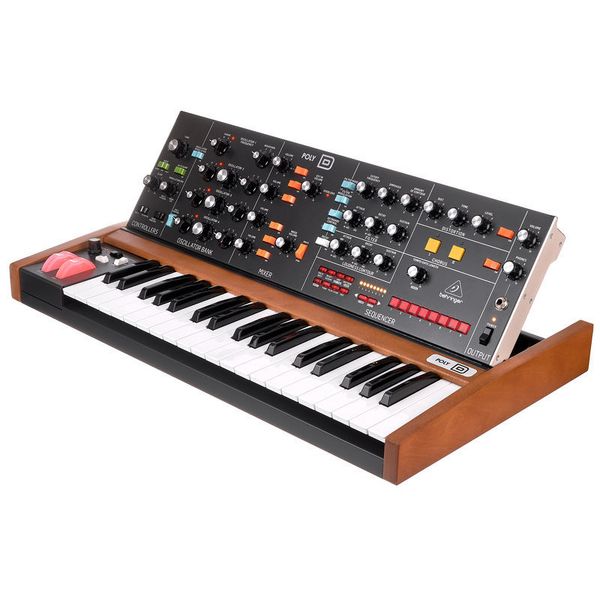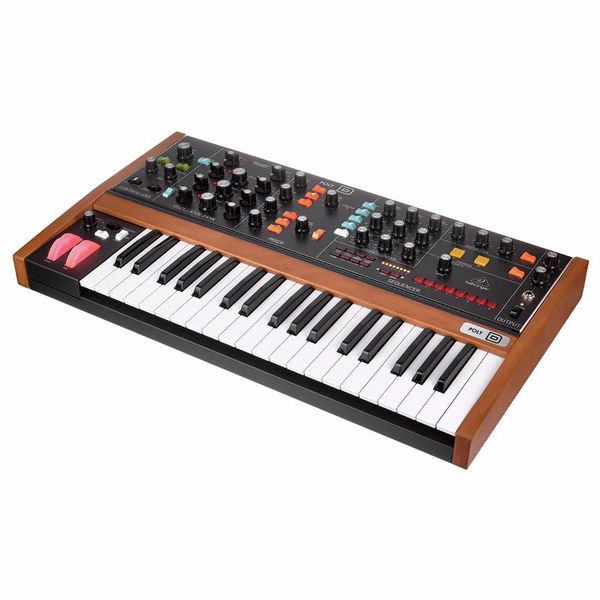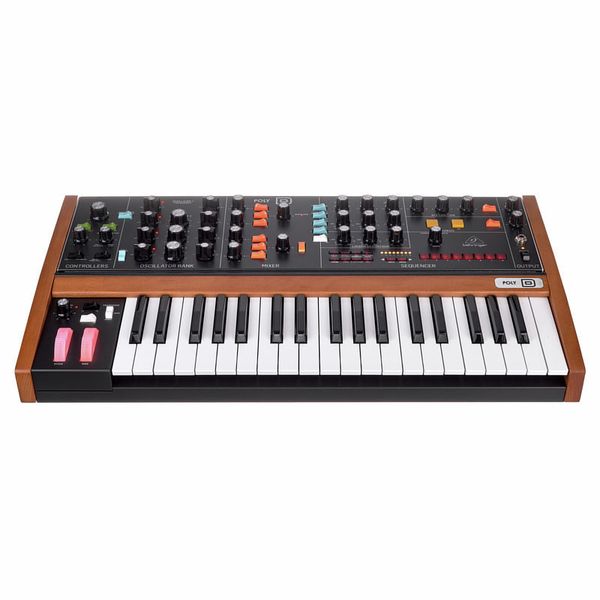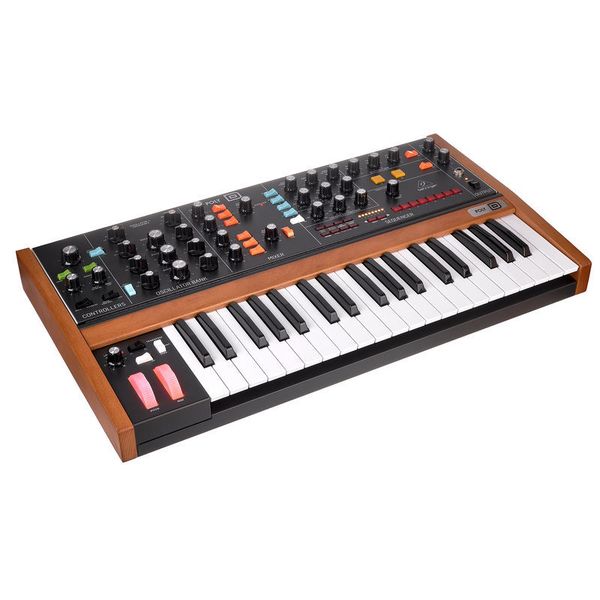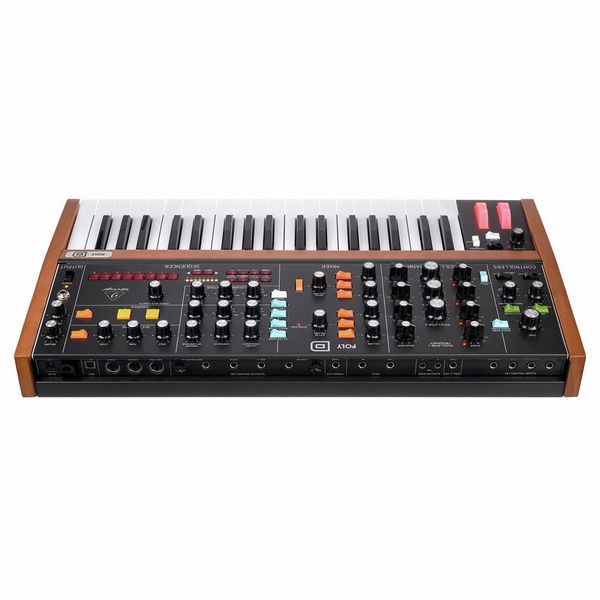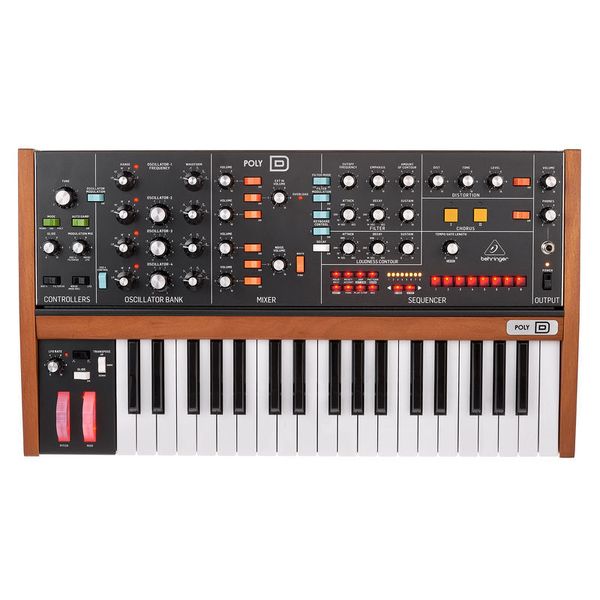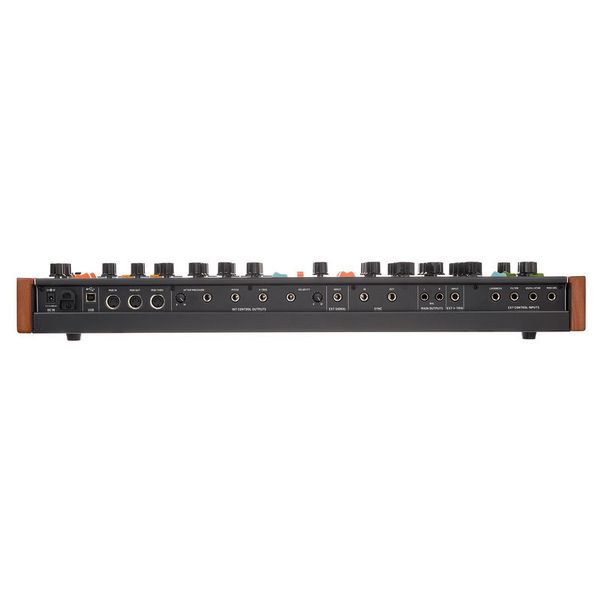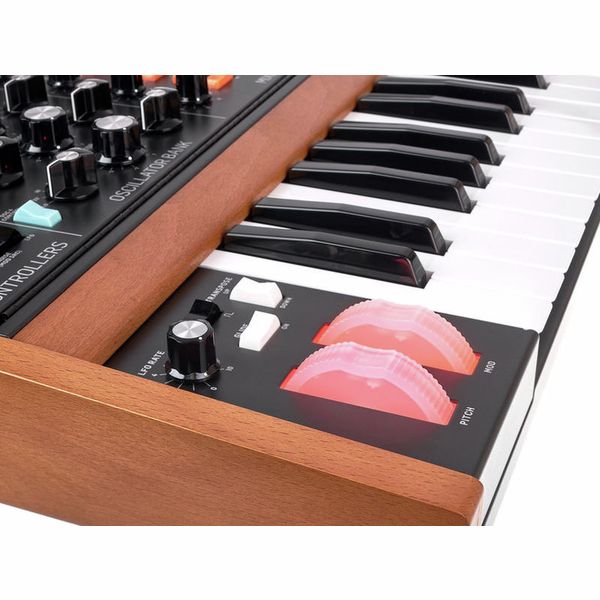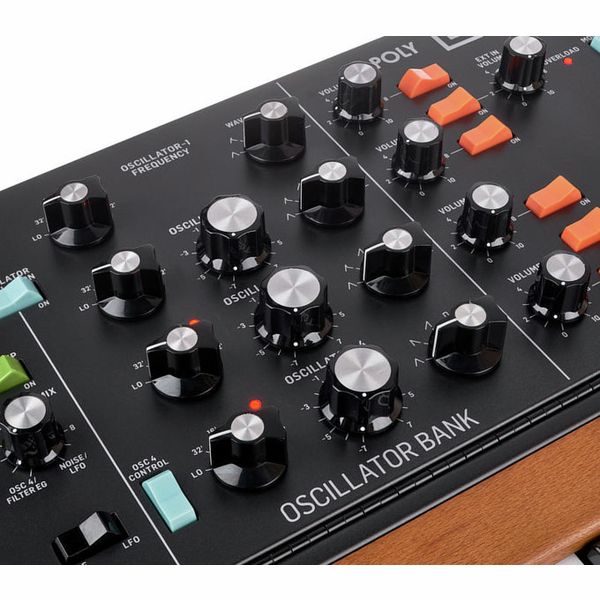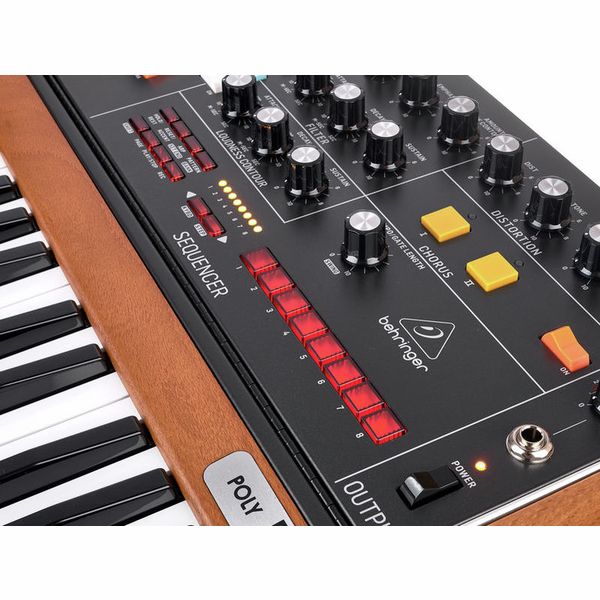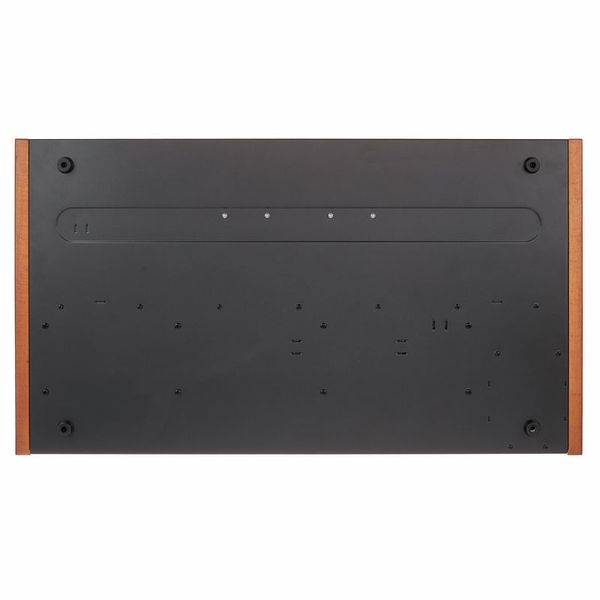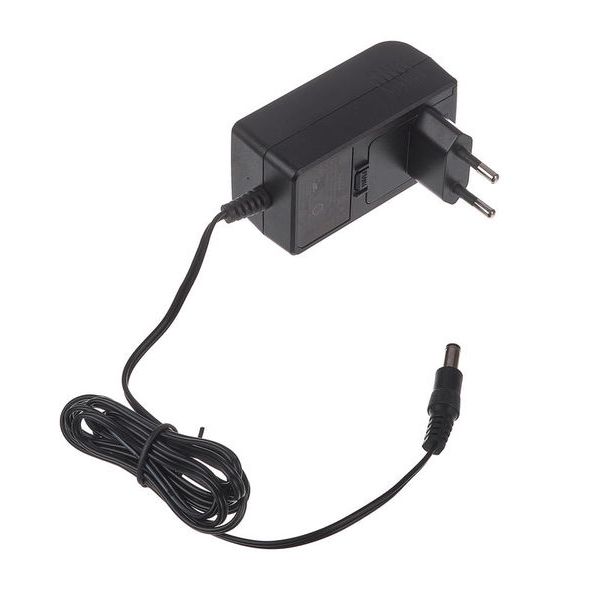Slaps like a
This unit packs a lot of punch, especially for the price.
I would love to have an original Model D just a much as you, but I don't have a third kidney to auction off - so to be able to get a sensible modern take on a classic is a fortunate opportunity.
Sonically, it really hits the spot and when driven through the external input it's a meaty experience. Chorus is a nice feature, however on 2 there is an overt warble , maybe a bit too much. For leads and bass it clears the floor, and fits for many different genres and playing styles.
As with any analogue synth it does sound best after warming up for half an hour to a couple of hours . For some real fun, turn the Glide all the way up, and switch to Unison mode; then just as you turn the synth on, just a few chords and riffs will provide instant hilarity and have you saying 'Portamento Gosh!'. Lead lines at such a time sound similar to a Big Room EDM monster slowly being toppled, and who doesn't wanna know what that sounds like?
As has been documented, the Poly mode is not truly polyphonic, and it's a bit dodgy all in all in this department, notes here there and everywhere and I stay away from it altogether.
Generally, the sequencer is a positive extra touch, it's a bit fiddly to get to grips with, but once done it's a fantastic feature.
Behringer's Synth Tool is a must to calibrate the Poly D, some of the default settings will not be to taste for everyone.
As default, the Poly D is set to be the Master Clock of a MIDI chain, and not to receive clock signal from other devices (drum machine/sequencer) via MIDI. However, after plunging it into Synth Tool I was able to change that quickly. I haven't quite worked out how to write sequences using synth tool yet, and although the sequencer could use a little update so one might be able to edit with a bit more intricacy.
Overall, you can't go wrong with this unit.
P.S -- Uli, if you're reading this, please can you make patch sheets/maybe an online thing like 20 Patch (For the MS-20), but for the Poly D? Thx



